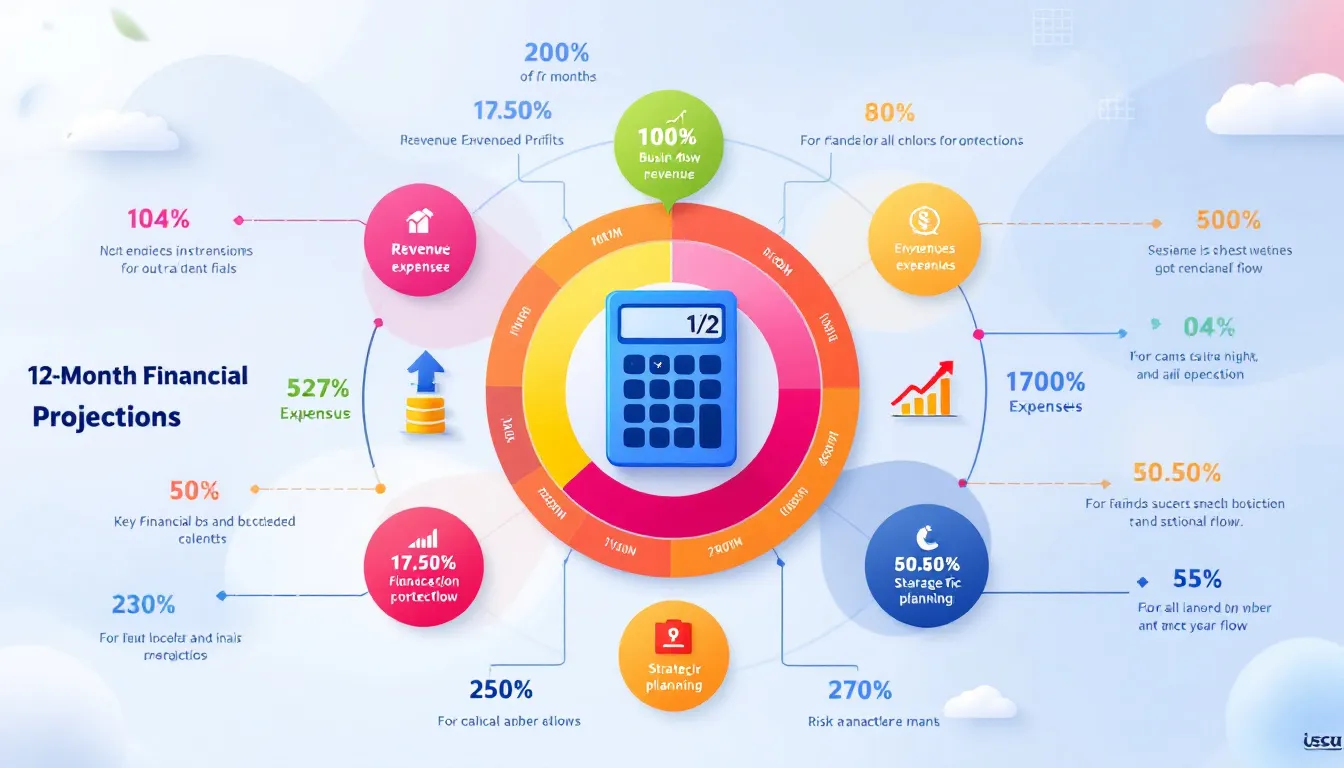Is this tool helpful?
How to use the tool
- Business information – Summarise what you sell and where you are now.
Example 1: “AI-driven tutoring app, EdTech sector, $1.2 M annual revenue, targeting Latin America.”
Example 2: “Craft-beer microbrewery, four taprooms, $950 k sales, planning nationwide can distribution.” - Financial data – Add current monthly figures.
Example 1: “Revenue $85 k, COGS $34 k, OpEx $28 k, Net margin 27 %.”
Example 2: “Sales $120 k, Direct costs $48 k, Overheads $42 k, Tax rate 21 %.” - Market conditions (optional) – Note trends or risks.
Example 1: “Rising smartphone adoption in target region.”
Example 2: “Expected 8 % malt-price increase.” - Generate – Click “Generate Financial Projections.” The engine applies the formulas below to return a month-by-month table of revenue, costs, cash flow and key ratios.
- Review & share – Copy results into pitch decks, budget sheets or investor updates.
Formulas and example calculation
Core equations
- Revenue: $$\text{Rev}_n = P \times U_n$$
- Unit growth: $$U_n = U_1(1+g)^{n-1}$$
- COGS: $$\text{COGS}_n = c \times U_n$$
- Gross profit: $$GP_n = \text{Rev}_n – \text{COGS}_n$$
- Net profit: $$NP_n = GP_n – OE – I – T$$
- Break-even units: $$BE = \frac{FC}{P – c}$$
Worked example
- Price per unit (P): $40
- Initial units (U1): 1 000
- Monthly growth (g): 5 %
- Variable cost (c): $15
- Fixed costs (FC): $20 000
- Operating expenses (OE): $18 000
- Interest (I) + Taxes (T): $4 000
Month 3 units: 1 000 × 1.05² = 1 102.5 → Revenue $44 100; COGS $16 537.5; Gross profit $27 562.5; Net profit $5 562.5. Break-even units: 20 000 / (40 – 15) = 800.
Quick-Facts
- Typical SaaS net margin: 15 – 25 % (Gartner Market Report 2022).
- Healthy current ratio benchmark: ≥1.5 (Investopedia, accessed 2024).
- Average U.S. SME monthly revenue volatility: ±8 % (Federal Reserve 2023).
- Most investors request 12- to 24-month projections (Y Combinator Guide 2023).
FAQ
How does the calculator project sales?
It multiplies your first-month units by a compound growth rate, then applies price to each month’s volume (Harvard Business Review, 2021).
Can I model zero growth?
Yes—set the growth field to 0 %. All future units equal month 1, creating flat revenue.
Which expenses belong in Operating Expenses?
Include payroll, rent, marketing, utilities, and software subscriptions (IRS Publication 535 2023).
Does the tool adjust for seasonality?
You manually change growth or units for seasonal months, then regenerate; the engine recalculates all metrics.
Is tax automatically calculated?
No. Enter combined interest and tax as a single monthly figure for clarity and jurisdiction flexibility.
What file types can I export?
Copy the HTML or plain text output and paste into Excel, Google Sheets, or any .csv-capable app.
How frequently should I update figures?
Update at least quarterly to reflect cost shifts and new sales data (SBA, 2023).
Does it work for non-profit budgets?
Yes—set revenue to grant income, treat program costs as COGS, and leave profit metrics as surplus.
Important Disclaimer
The calculations, results, and content provided by our tools are not guaranteed to be accurate, complete, or reliable. Users are responsible for verifying and interpreting the results. Our content and tools may contain errors, biases, or inconsistencies. Do not enter personal data, sensitive information, or personally identifiable information in our web forms or tools. Such data entry violates our terms of service and may result in unauthorized disclosure to third parties. We reserve the right to save inputs and outputs from our tools for the purposes of error debugging, bias identification, and performance improvement. External companies providing AI models used in our tools may also save and process data in accordance with their own policies. By using our tools, you consent to this data collection and processing. We reserve the right to limit the usage of our tools based on current usability factors.







